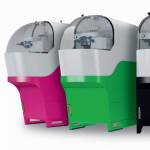Inventing can be fun, and profitable. Here’s how to get started.
 Companies are looking for your ideas. Smart businessmen understand and respect that great ideas can come from anywhere — and anyone. Open innovation makes sense!
Companies are looking for your ideas. Smart businessmen understand and respect that great ideas can come from anywhere — and anyone. Open innovation makes sense!
By seeking out and being willing to accept product ideas submitted from outside their own walls, companies up their chances of finding the next great idea. At the same time, they lower their research and development costs. Entrepreneurs can capitalize on open innovation by learning how to license their ideas, cheap. If that sounds too difficult, you’re psyching yourself out.
Earning royalties from licensing one of your ideas is one of the most straightforward examples of the multiplier effect: Rent your idea to a company, and they’ll have to pay you every time a unit is sold, regardless of where you physically are or what you’re doing. I’ve collected royalties while on vacation with my family. I’ve been able to set my own hours.
When I started out, only a few industries were willing to work with freelancers and outside inventors. That has changed.
Here’s a quick guide to help get your brain churning:
1. Come up with an idea. This step should be fun. My advice is to focus on making small improvements to existing products — that way, you can be sure there’s already a market for your idea. More likely than not, it can be manufactured at a reasonable price point. Retailers change their inventory often. Companies are looking for newly improved products.
2. File a provisional patent application. Only big ideas require patents. Filing a PPA establishes perceived ownership — and if you move quickly, which you should, perceived ownership is enough to get your product to market first. Filing a PPA is easy and inexpensive, and most importantly, it allows you to label your idea “patent pending” for up to one year. Later on, you might be able to get the company who is licensing the idea to pay for your patent application.
3. Create a sell sheet. It’s your most important tool when licensing an idea. Essentially, a sell sheet is a short and sweet advertisement for your idea. That means one page only! It should feature your one-line benefit statement prominently. Why do people want and need this idea? Next, include a picture or drawing of your idea. And of course, include your contact information.
4. If you have a prototype made, make a YouTube video. I use my iPhone, and keep it very simple. That means no music and not much longer than a minute — just enough time to identify the problem that needs solving, and how your product solves it.
5. Get on the phone. Start calling potential licensees. It sounds scary, but in reality, it’s not hard. What companies make the products that are similar to your idea? Call those companies. Don’t identify yourself as an inventor; introduce yourself as a product developer. Tell them you have a new idea that you’d like to submit. Ask what employee you should talk to.
By Stephen Key
Source: Enterpreneur.com








